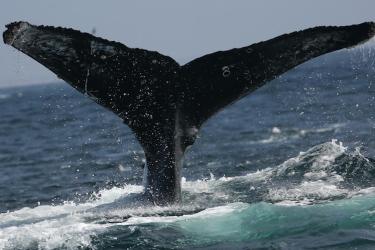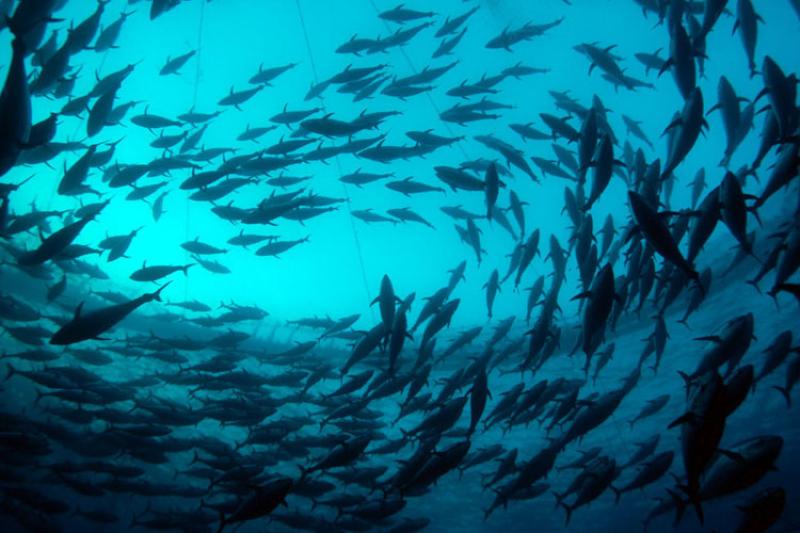The past year posed significant logistical challenges for multilateral organizations charged with the management and conservation of tunas and other highly migratory fish stocks. They had to adapt to new formats to make critical decisions on the sustainable management of these stocks. The shift to virtual meetings and email-based decision processes caused these organizations to streamline the number of issues they worked on. This allowed decisions to be made that ensured the continuity of management for key fish stocks, by extending many management measures set to expire in 2020.
The United States is a member of several regional fisheries management organizations. Three of them are responsible for the conservation and management of tuna and tuna-like stocks. These organizations are often where dozens of countries and fishing entities come together to discuss and develop international fisheries management measures. They set the rules for how, and how much, fish can be caught, frequently through challenging—and previously in-person--multilateral negotiations.
Through these organizations, the United States promotes the long-term sustainability of fish stocks through science-based management. We work to ensure that new measures are fair and equitable to U.S. stakeholders.
Here’s a rundown of what happened at the meetings:
The Inter-American Tropical Tuna Commission
This commission is responsible for the conservation and management of tuna and other marine resources in the eastern Pacific Ocean. It met virtually in November 2020 for its 95th annual meeting. The commission adopted several resolutions, including a rollover of the previous 2-year management measure for Pacific bluefin tuna with some minor adjustments. The resolution establishes an annual limit of 425 metric tons for U.S. commercial vessels in 2021. However, members failed to reach a unanimous consensus on tropical tuna management measures. This created an urgent situation with measures set to expire at the end of 2020.
In response, the commission quickly convened a 96th Extraordinary Meeting a month later to specifically address and adopt tropical tuna management measures. Members agreed ultimately at the special session to a rollover of its existing quotas for tropical tuna in the eastern Pacific for 2021. The tropical tuna fishery includes bigeye, yellowfin, and skipjack tuna stocks. Additional meetings will be convened in 2021 to discuss additional tropical tuna measures for 2022 and beyond.
The Western Central Pacific Fisheries Commission
This organization is devoted to the long-term conservation and sustainable use of highly migratory fish stocks, such as tunas and billfish, in the western and central Pacific. Members met virtually in December 2020. Several items were addressed at this meeting including:
- Approval of applications for nine Cooperating Non-Members
- Adoption of a final Compliance Monitoring Report and the 2020 list of illegal, unreported and unregulated fishing vessels
Importantly, the Commission extended for one year its measure for bigeye, skipjack, and yellowfin tuna, which otherwise would have expired in February 2021. It has had measures in place for these tropical tuna stocks—none of which are subject to overfishing or overfished—since 2005. Its renewal extends specific controls in the purse seine, longline, and other highly migratory species fisheries in the western and central Pacific Ocean.
The Commission also agreed on a path forward for developing a new tropical tunas measure in 2021. This includes two workshops to be chaired by the Commission Chair. Progress made in these workshops should put the Commission in a good position to consider substantial revisions to the measure at its annual meeting in December 2021. This includes revisions sought by the United States to address challenges in its fisheries, including those important to the U.S. Pacific Islands. Additionally, the Commission formed a new intersessional working group to consider crew labor issues, co-chaired by Indonesia and New Zealand.
The United States continued to push the Commission to adopt measures needed to rebuild the overfished stock of striped marlin in the North Pacific Ocean. However, some members were not prepared to take action until additional scientific information was available.
The Commission discussed various challenges associated with the pandemic. In particular, they looked at the difficulties in safely deploying fisheries observers and the consequent lack of data for scientific and compliance purposes. No firm decisions were made, but intersessional discussions will continue.
International Commission for the Conservation of Atlantic Tunas
This is an international commission responsible for the conservation and management of tuna and other marine resources in the Atlantic Ocean, including the Caribbean and Mediterranean Seas. It cancelled its annual meeting in November 2020. However, its 53 members, including the United States, addressed essential business over a four-month-long correspondence process that concluded in February.
Without action from its members through correspondence, many elements of key stock management measures would have expired at the end of 2020. Outcomes include the extension of conservation measures for northern and southern albacore, eastern Atlantic and Mediterranean bluefin tuna, and bigeye tuna. Though new proposals were considered for North Atlantic shortfin mako shark, an agreement could not be reached. The current management measures will remain in effect through 2021. For western Atlantic bluefin tuna, there was no consensus to lower the total allowable catch. The United States led an effort to ensure that the best available science will be incorporated in a new stock assessment in 2021. The newly adopted measure:
- Maintains the 2020 TAC for one year
- Calls for a re-assessment in 2021 to address scientific issues that could affect the understanding of the status of the stock
- Commits the parties to adopt a TAC in 2021 that addresses overfishing based on the new stock assessment
In the near term, work will continue virtually to advance the development of rebuilding plans for bigeye tuna and North Atlantic shortfin mako, among other issues. The Commission hopes to hold an in-person annual meeting on November 15–22, 2021.
As the COVID-19 global pandemic persists, these organizations will continue to adapt and develop procedures and standards that help successfully and sustainably manage fish stocks in the new normal.



